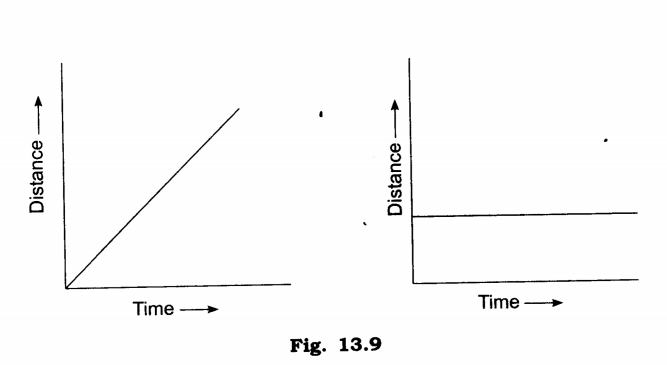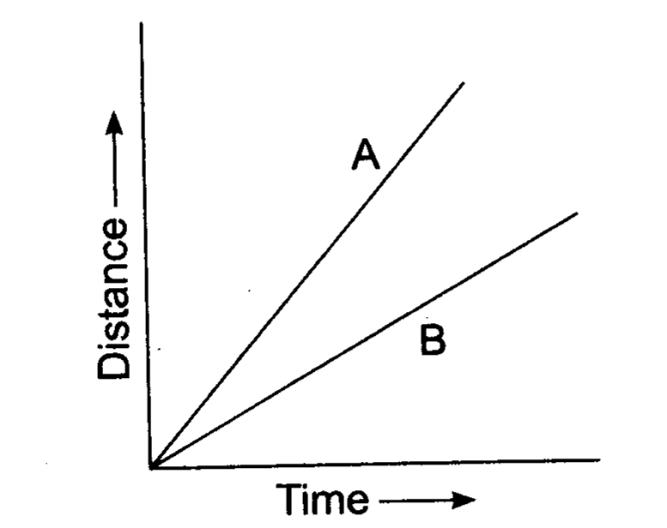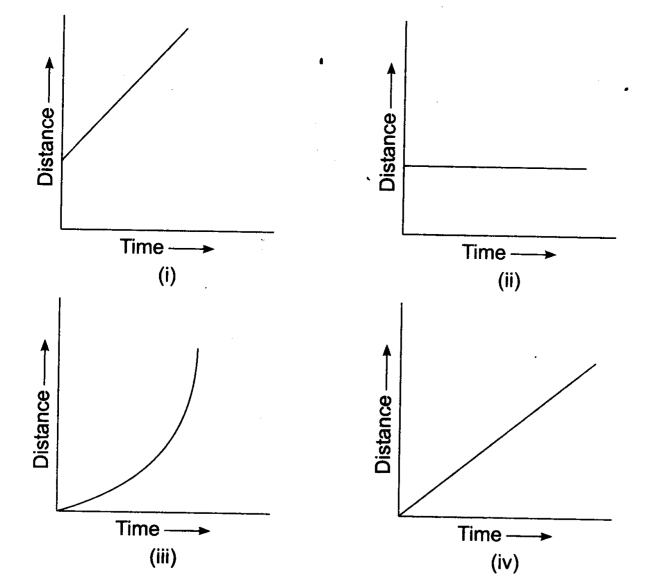NOTES
SPEED-The distance travelled by an object per unit time (either in one hour, in one minute or in one second) is known as speed of the object.
NONUNIFORM AND UBIFORM MOTION-
On the other hand, an object moving along a straight line with a constant speed is said to be in uniform motion. In this case, the average speed is the same as the actual speed.
(i) A sundial measures time by the position of the shadow cast by the sun.
(ii) The device which uses the flow of sand from one glass bulb to another in order to measure time is known as a sand clock
(iii) A device which uses the rate at which water drip from one vessel to another measure time interval is known as a water clock
A simple pendulum consists of a small metal ball called bob which is suspended by a long thread from rigid support such that bob is free to swing back and forth. The to and fro motion of a simple pendulum is an example of periodic or oscillatory motion. Galileo was the first person to study the motion of a pendulum.

The speedometer is an instrument on a vehicle’s dashboard which indicates the speed of the vehicle when it is moving. This instrument tells us the speed of a running vehicle at that instant of time in kilometre per hour.
QUESTION ANSWERS AND EXCRCISE
(i) Motion of your hands while running.
(ii) Motion of a horse pulling a cart on a straight road.
(iii) Motion of a child in a merry-go-round. •
(iv) Motion of a child on a see-saw.
(v) Motion of the hammer of an electric bell.
(vi) Motion of a train on a straight bridge.
Ans.(i) Oscillatory motion
(ii) Linear motion
(iii) Circular motion
(iv) Oscillatory motion
(v) Oscillatory motion
(vi) Linear motion
(i) The basic unit of time is second.
(ii) Every object moves with a constant speed.
(iii) Distances between two cities are measured in kilometers.
(iv) The time period of a given pendulum is not constant.
(v) The speed of a train is expressed in m/h
Ans. (ii), (iv), (v)
Ans. Time taken to complete 20 oscillations = 32 s
Time taken to complete 1 oscillation = 32/20 s = 1.6 s
Time period of a pendulum is time taken by it to complete 1 oscillation.
Time period of pendulum is 1.6 seconds.
Ans.Distance = 240 km
Time taken = 4 hours
Speed =Distance covered/time taken = 240km/4 hammer
=60 km/h
Speed of train =60 km/h
Q.5.The odometer of a car reads 57321.0 km when the clock shows the time 08:30 AM. What is the distance moved by the car, if at 08:50 AM, the odometer reading has changed to 57336.0 km? Calculate the speed of the car in km/min during this time. Express the speed in km/h also.
Ans.Distance = 57336.0 km – 57321 km =15 km
Speed in km/min =15km/20 min = 3/4 km/min
Speed in km/hr =15 km/1/3 hr
=(15 x 3) km/hr
=45 km/hr.
Q.6.Salma takes 15 minutes from her house to reach her school on a bicycle. If the bicycle has a speed of 2 m/min, calculate the distance between her house and the school.
Ans.Time taken =15 min
Speed = 2 m/min .
Distance = speed x time = 2 x 15 = 30 m
Distance between Salma’s school and her house is 30 m.
Q.7.Show the shape of the distance-time graph for the motion in the following cases :
(i) A car moving with a constant speed.
(ii) A car parked on a side road
Ans.
Q.8. Which of the following relations is correct?
(i) Speed = Distance Time
(ii) Speed = Distance/Time
(iii)Speed – Time/Distance
(iv)Speed = 1/Distance Time
Ans. (ii) Speed = Distance/Time is correct
Q.9.The basic unit of speed is:
(i) km/min (ii) m/min (iii) km/h (iv) m/s
Ans. (iv) m/s
Q.10.A car moves with a speed of 40 km/h for 15 minutes and then with a speed of 60 km/h for the next 15 minutes. The total distance covered by the car is:
(i) 100 km (ii) 25 km (iii) 15 km (iv) 10 km
Ans.(ii) 25 km
Q.11.Suppose the two photographs, shown in fig. 13.1 and fig. 13.2 of NCERT had been taken at an interval of 10 seconds. If a distance of 100 metres is shown by 1 cm in these photographs, calculate the speed of the blue car.
Ans.0.1 cm/s or 10 m/s
Q.12.Fig 13.10 shows the distance-time graph for the motion of two vehicles A and B. Which one of them is moving faster?
Ans. ‘A’ is moving faster.
Q.13.Which of the following distance-time graphs shows a truck moving with speed which is not constant?
Ans. (iii)




No comments:
Post a Comment